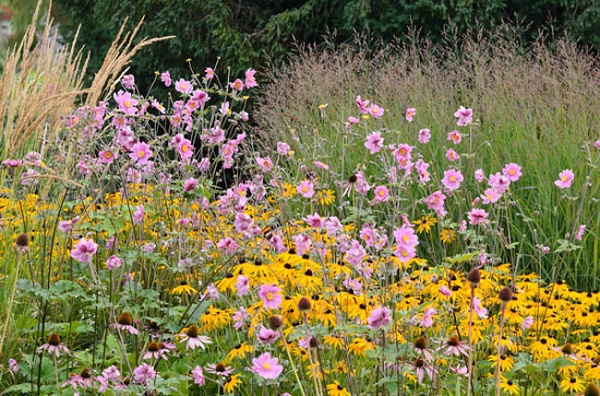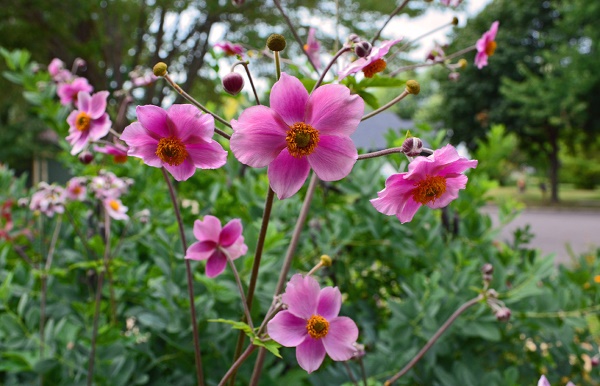I think I’m turning Japanese…..
Recently I was visiting a garden where there was a great drift of Japanese Anemone planted in a garden and I just stood for a moment and thought “Why don’t more of us plant these gorgeous plants?”
Indeed I’ve some in my back garden (an offspring from a garden some 4 years ago), and Oakfield Park has a substantial display in the yellow and white garden from mid August to October.
Japanese Anemones are gorgeous late summer flowering perennials which flower around 5-6’ high, on very long flowering stems – the foliage might only be 3’ high. Due to the flowers being light and the long flowering stems the single flowers have a lovely sway about them in the summer breeze.
These Anemones were ‘discovered’ by plant collectors in the 17th century in Japan, but these were in fact garden escapes and the plants are originally Chinese in origin!

Japanese anemone (Anemone hupehensis var. japonica) and orange cone flower (Rudbeckia fulgida)
Available to survive, and flourish, in a whole heap of soils and aspects – including North facing beds below trees, and poor gravelly soils these summer perennials are suited to nearly every garden. So there must be a downside? Yes, well no, it depends on what type of gardener you are and what type of garden you have to whether you consider this to a good or a bad thing. Japanese Anemone have a vigorous and shallow fleshy root system, which surfaces regularly to produce a new plant, so a singular plant will after just a few years become a drift of plants 4’ wide – super if you garden on an informal style, a disaster if you keep everything in your garden in straight lines.
These perennial anemones are only found in pink tones and pure white and I’ d suggest you use these to brighten dark corners of the garden, or to plant through shrubs to add some colour in the late summer and early Autumn (or to fill the gaps to reduce your weeding!).
After a few seasons you’ll have many an admirer and as it freely produces lots of baby plants you can be digging some up and giving them away to everyone who asks.
Maintenance of these Anemones is minimum, just cut back old flowering stems post flowering, mulch around the base in Spring with your garden compost and remove old or tattered leaves from the base (the leaves are semi-evergreen so in a mild garden you should have foliage most of the winter).
by Gareth Austin
Tags:





